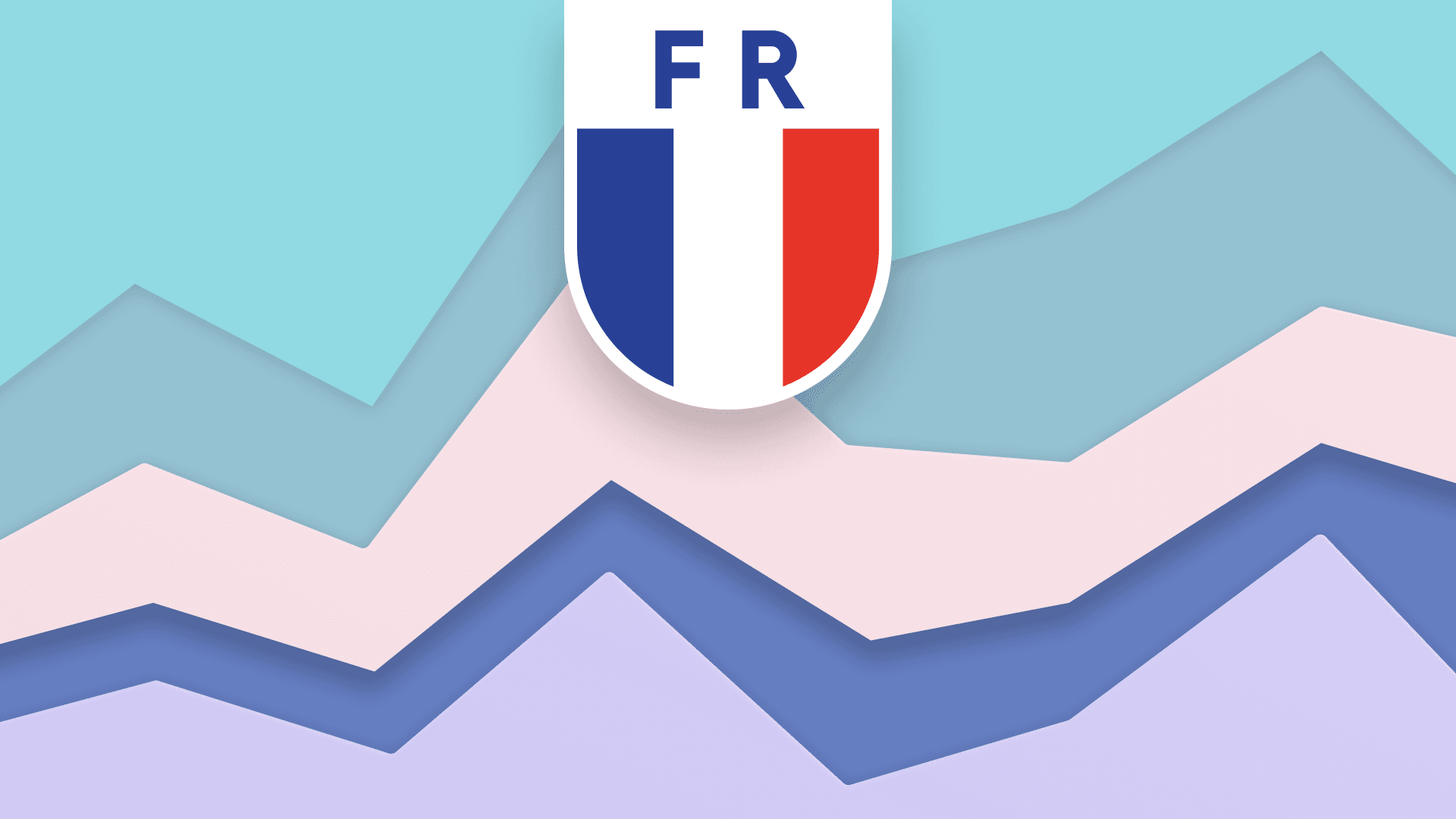Digital Frustration: Why French Users Don't Tolerate Bad Apps
Amplitude research finds over 70% of French consumers are ready to abandon a brand over a poor app experience.
Si vous souhaitez lire ce rapport en français, vous le trouverez ici.
Digitally engaging with our favorite brands is rarely optional in today’s world. From shopping online to getting daily updates in our work and social media apps, digital touchpoints are baked into our routines and have profoundly reshaped people's expectations. An app that is slow, unstable, or irritating is often abandoned immediately—and with it any brand loyalty.
France is no exception to this trend. As smartphones have become the primary point of contact with most brands, the quality of an app experience is a critical factor for brand trust and engagement. Digital friction can generate a complete breakdown in the consumer-brand relationship.
Our research, conducted among 2,000 smartphone users in France, reveals a concerning reality: more than 7 out of 10 French users (72%) say they would abandon a brand completely following a poor experience with its app.
This striking figure is just one of the crucial insights we’ve uncovered in our research. Brands must understand current customer sentiments and attitudes when it comes to app experiences in order to increase retention, improve digital experiences, and drive brand loyalty.
From compulsive downloading to phone decluttering
Although the typical consumer’s smartphone is saturated with apps (41 apps on average across all age groups), only 12 apps are used weekly. Surprisingly, even tech-savvy Gen Z consumers only use an average of 16 apps per week—and that figure is a mere 9 for Boomers. This highlights just how critical it is for brands to stay top of mind in a crowded, competitive space where people's attention is limited.
Users are also very selective and don’t hesitate to clear out their apps. In fact, 43% intentionally limit the number of apps they download to avoid digital clutter on their phones, and 42% regularly delete unused apps. That means brands need must-have services if they hope to stay on the homescreen.
Across the board, some apps are deemed more frustrating in terms of user experience than others. Social media, work, and banking/finance are the most annoying apps according to respondents. Ranked by level of frustration, from highest to lowest:
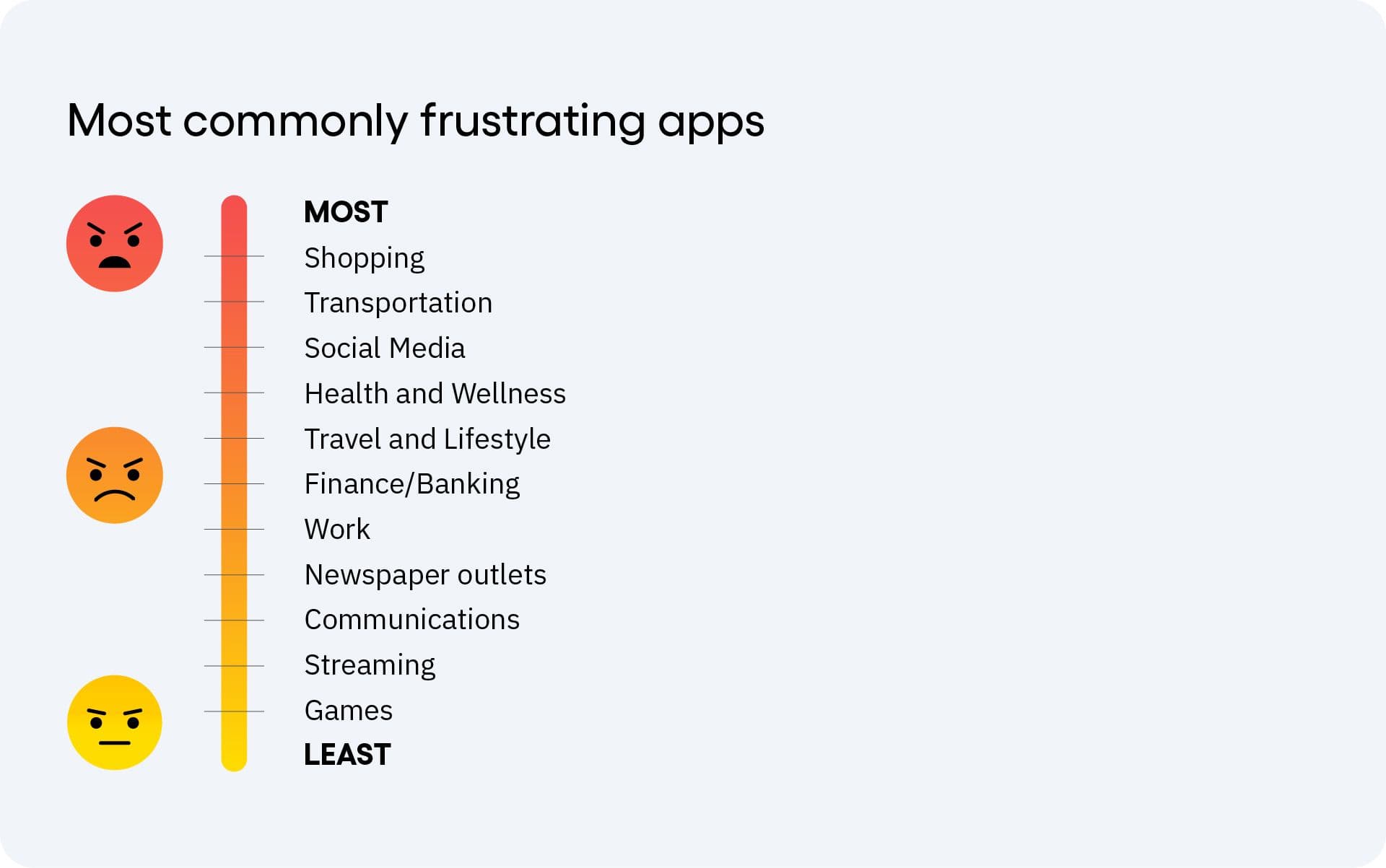
Breaking points: The elements that derail a good app experience
When it comes to app frustrations, a clear ranking emerges. Glitches top the list for 76% of people, followed by slow loading times (72%) and unclear or un-intuitive navigation (72%). These issues go beyond mere technical nuisances: They disrupt the user journey, weaken brand loyalty, and trigger abandonment.
Other irritants quickly pile up:
- 71% are bothered by random error messages
- 69% dislike having to create an account to access the app
- 67% are irritated by intrusive popups
Though seemingly minor, these issues complicate the user experience. In addition, small text (66%) and buttons that are hard to tap (65%) make interactions more tedious. Poorly designed privacy settings (61%) add an extra layer of complexity, especially for those who want full control over their personal data.
Sensitivity varies across generations:
- Boomers are especially sensitive to account creation (70%), and small text (70%), reflecting strong expectations around clarity and simplicity.
- Gen X is heavily affected by navigation issues (74%), readability challenges (72%), interruptions such as error messages (73%) and popups (72%).
- Millennials show the highest frustration levels across most issues, especially glitches (81%), slow performance (76%), and random error messages (76%).
- Gen Z tends to be more tolerant than other generations of things like popups (61%) or small text (55%), but they are highly sensitive to bugs (79%) and app slowness (72%).
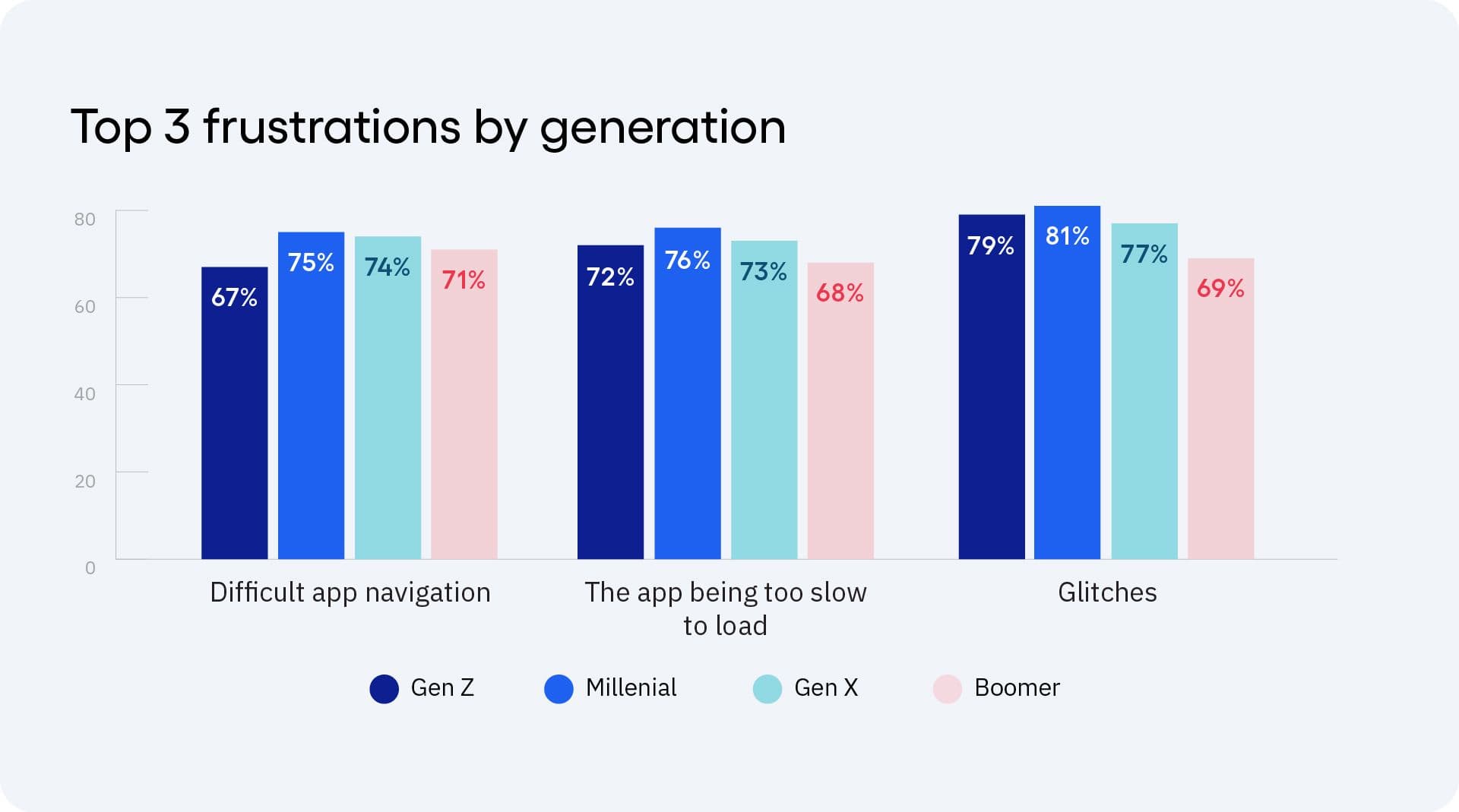
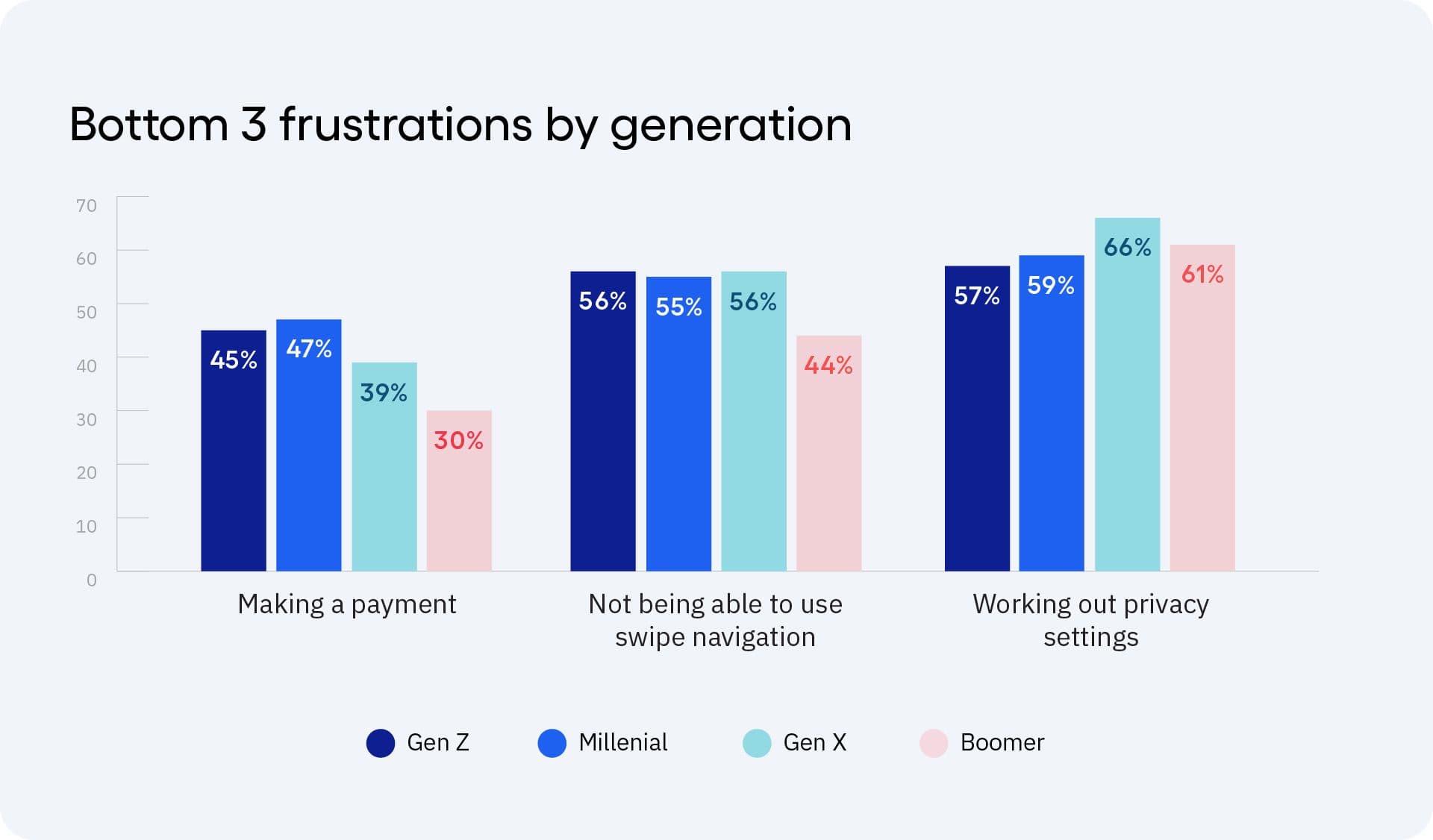
Popups: Nuisance or opportunity?
Popups, those unexpected windows that interrupt navigation, generate mixed opinions. Over two in five people (40%) say they never pay attention to them, whether they’re for promotions, subscriptions, or special offers. The remaining 60% engage from time to time, with sharp generational differences: 62% of Gen Z says they’ve interacted with a popup at least once, compared to just 25% of Boomers.
Brands need to rethink how they use popups to make them more relevant, better timed, and less disruptive, especially for older generations.
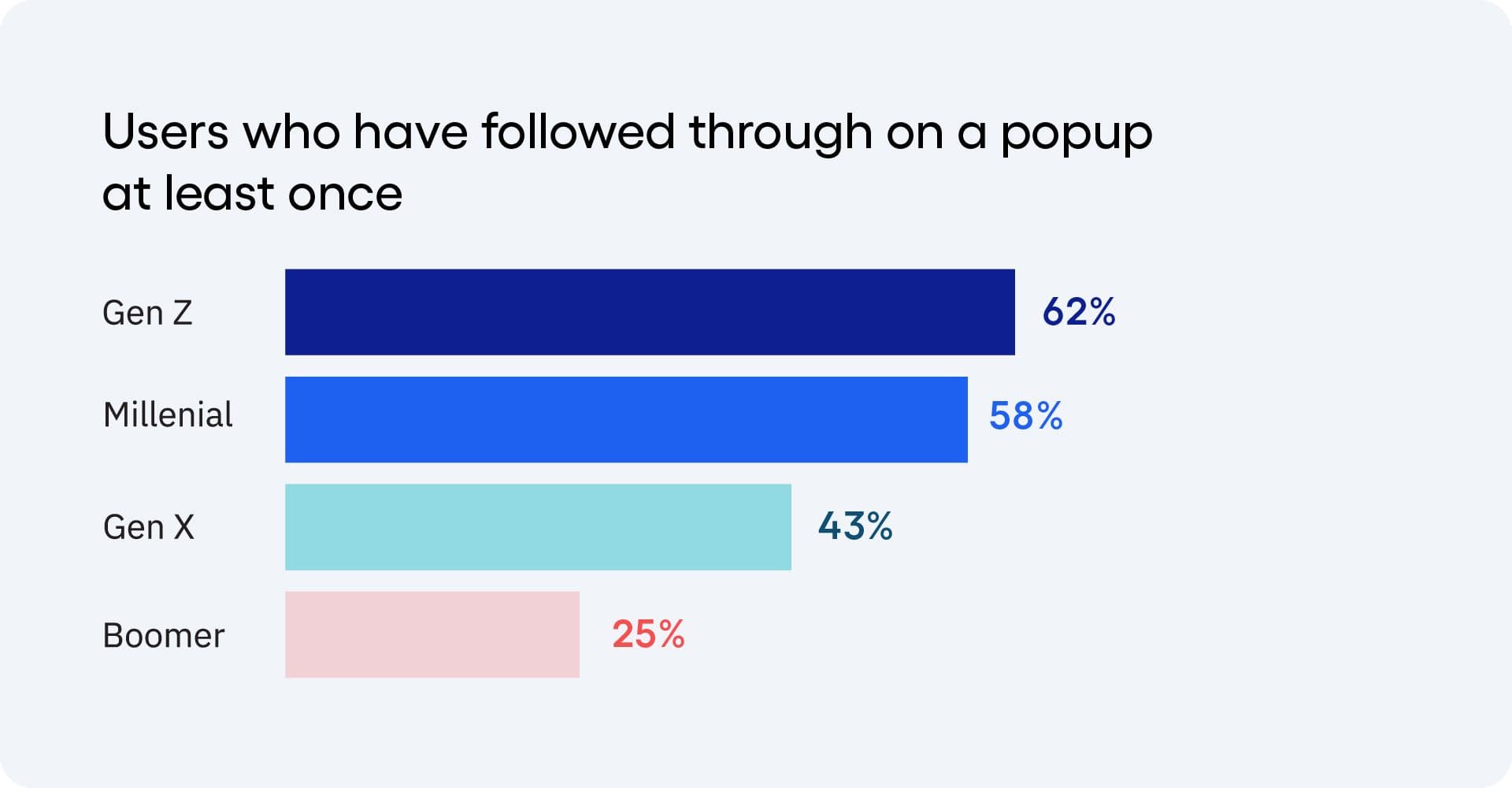
The loyalty tipping point
Tap, crash, quit. People abandon apps quickly when they don’t work as expected. 43% say they ditch an app within minutes if it malfunctions. Even more abruptly, 13% give up on an app within seconds.
App crashes affect a significant share of consumers. Over 40% say an app crashes on them at least once a month. The figure rises to 57% for Gen Z and 55% for Millennials, while only 28% of Boomers report the same.
When an app crashes or freezes, it takes an average of 15 minutes to recover and resume normal use. Yet few people try to resolve the issue: Only 18% contact customer support—suggesting they’re more likely to ditch an app than report an issue.
The stakes for brands couldn’t be higher, with 72% of people saying they would consider abandoning a brand altogether after running into issues with an app. This is especially true for Gen X, where the figure reaches 76%, compared to 59% for Gen Z—highlighting a stronger intolerance among older generations when app expectations aren't met.
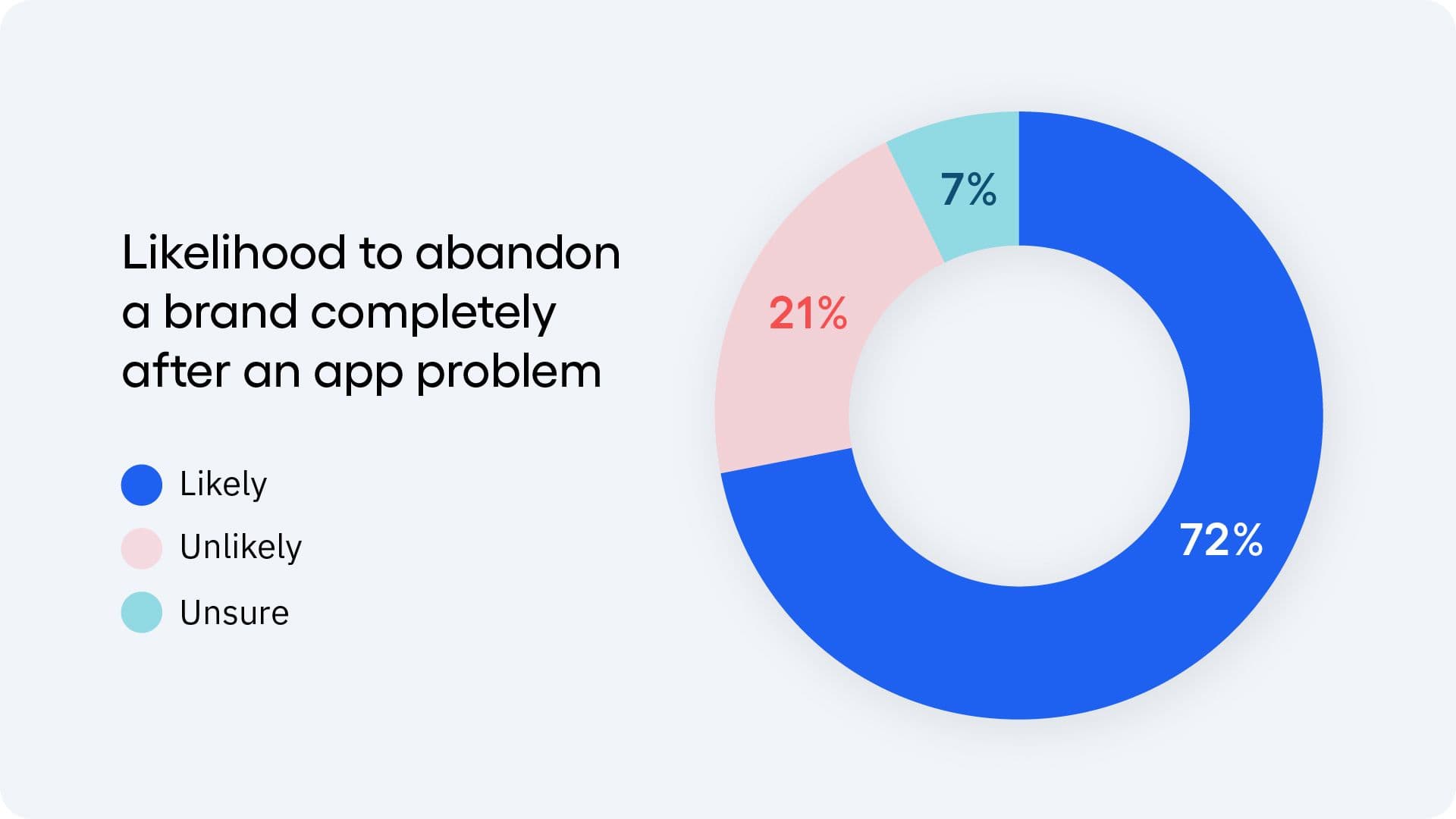
While older generations may be quicker to walk away, younger users tend to feel the frustration more acutely. When it comes to the look and feel of an app, the emotional response is strong—with 47% of people who have experienced poor app design saying it left them feeling enraged. This reaction is even more pronounced among younger generations—58% of Gen Z and 56% of Millennials report feeling enraged when confronted with design issues, compared to just 37% of Boomers.
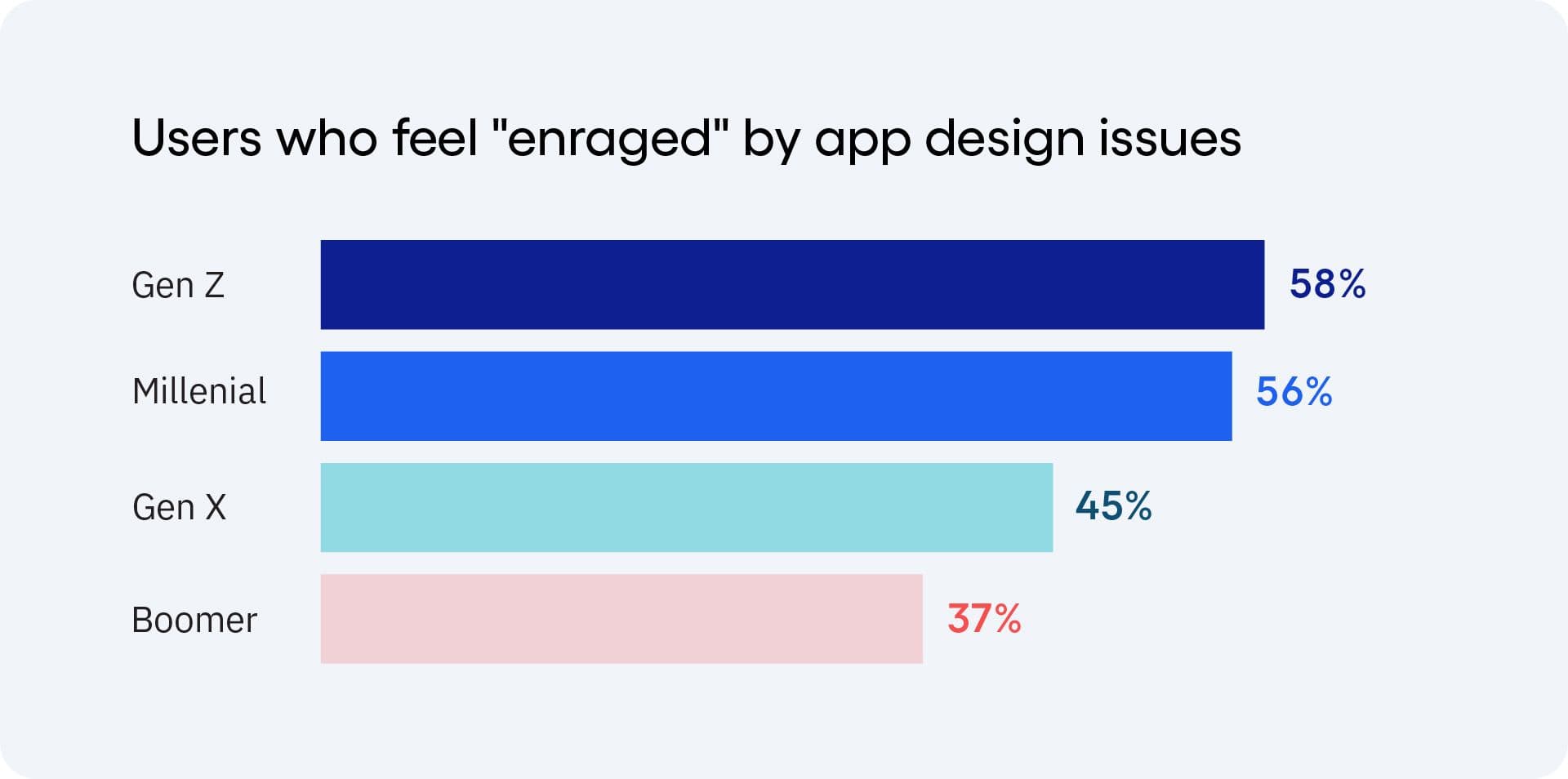
Reducing frustration to retain users
When it comes to loyalty, reliability outweighs aesthetics. A vast majority of consumers (84%) say they would rather use a simple-looking app that works smoothly than a beautifully designed one that glitches. This confirms that people value performance and ease of use far more than visual flair, especially when design issues create friction or confusion.
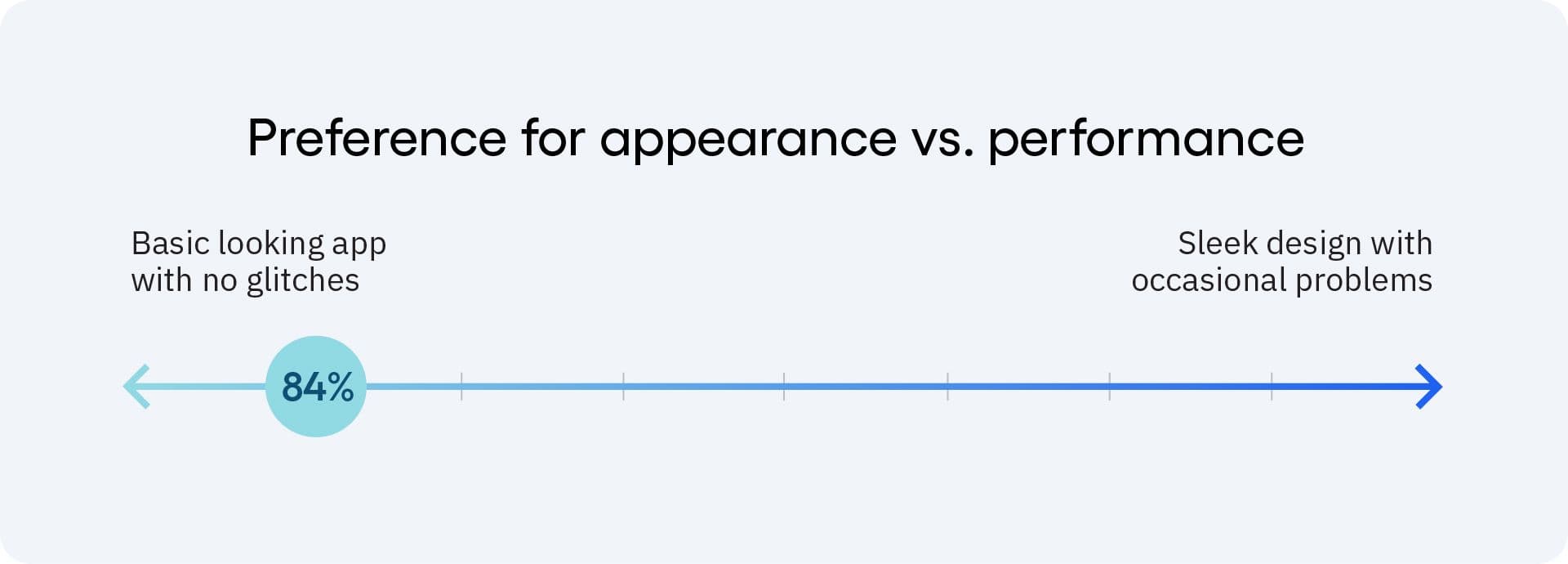
The rise of super apps: The all-in-one era?
Another driver of engagement is the emergence of super apps. These all-in-one platforms—combining messaging, payments, transport, and shopping—appeal to 57% of French users. But this enthusiasm varies by age group: 63% of Gen Z are drawn to them, compared to just 48% of Boomers.
This trend reflects a demand for simplicity, efficiency, and centralized services. Brands that are able to deliver an integrated, frictionless experience will have a clear advantage in capturing and retaining user attention.
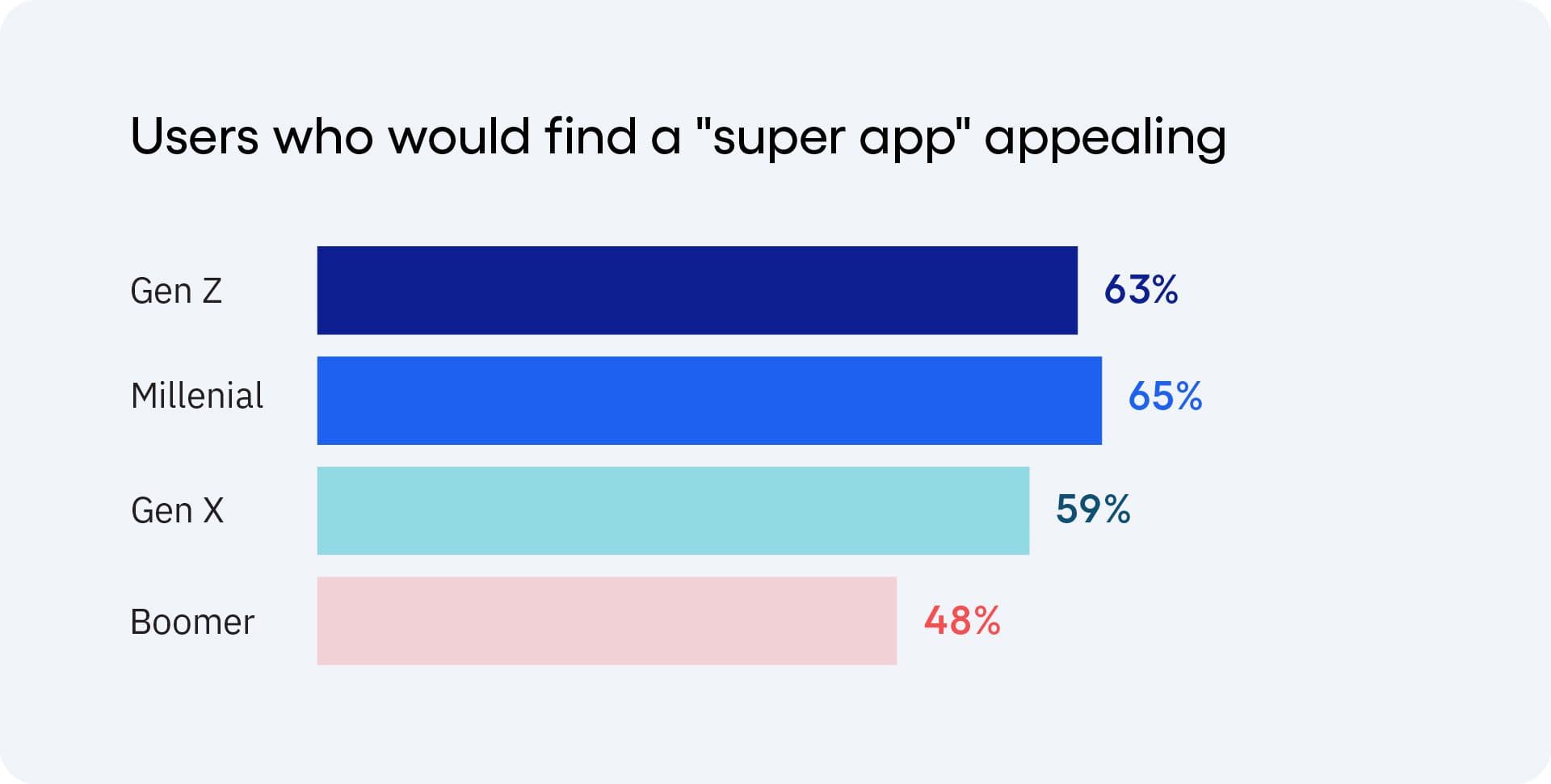
Digital analytics: Anticipating and reducing app churn
People expect their digital experiences to be smooth, intuitive, and effortless. When an app doesn’t meet those expectations—even in small ways—it creates friction. It’s rarely just about a bug or a delay; it’s about moments where people feel let down, where the experience breaks their flow.
These moments matter. To truly improve retention, brands need to move past surface-level metrics and gain a deeper understanding of user behavior. Where are they hesitating? What patterns reveal frustration? How are expectations evolving over time? These signals shape how people engage and whether they come back.
That’s where Amplitude comes in. Our digital analytics platform helps teams uncover hidden friction points and anticipate what consumers need before they have to ask. The right data-driven insights won’t just fix problems—they’ll drive you to build seamless, adaptive experiences that earn trust and loyalty over the long term.

Jeremy Grinbaum
Vice President of EMEA South, Amplitude
With more than 20 years of software sales experience, Jeremy Grinbaum leads the strategy and execution of Amplitude’s business in France, Southern Europe, the Middle East, and Africa.
More from JeremyRecommended Reading

The Product Benchmarks Every Media and Entertainment Company Should Know
Dec 23, 2025
5 min read

Amplitude Pathfinder: Why Austin Costello is a Triple Threat Analyst
Dec 22, 2025
8 min read

Introducing Amplitude on Amplitude
Dec 22, 2025
3 min read

Stop Asking, Start Listening: How to Connect Feedback to Behavior
Dec 19, 2025
12 min read

